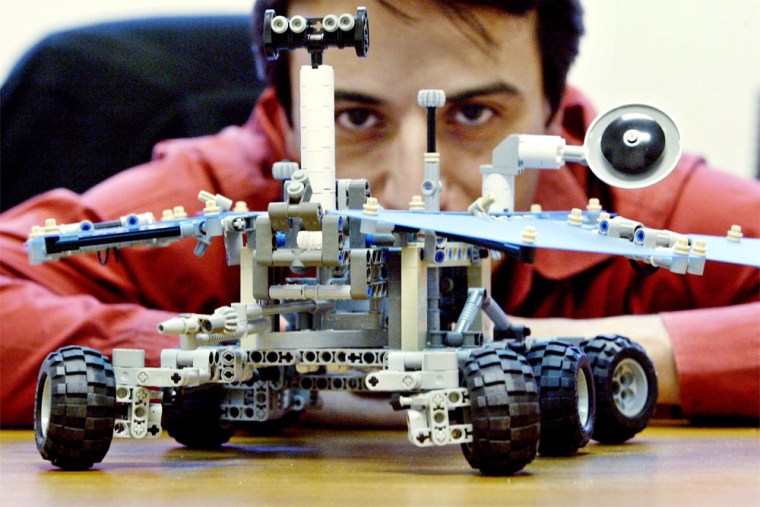The California Institute of Technology is making a little green off the red planet.
Caltech, which runs the Jet Propulsion Laboratory for NASA, patented the twin rovers it sent to investigate the surface of Mars and is licensing their images for commercial use.
Models of the six-wheeled Spirit rover are already on store shelves. Caltech has inked three deals so far and expects perhaps three more.
Officials of the private university didn’t say how much money they hope to make, but pledged to donate half to educational outreach programs and the rest for Caltech research.
“We did it more for publicity than as a commercial hit,” said Frederic Farina, assistant director of Caltech’s office of technology transfer.
Danish toy maker Lego Co. was one of the first companies to sign an agreement and is already selling a build-it-yourself toy version of Spirit, the rover that arrived on Mars on Jan. 3 and has wheeled away from its lander to explore the landscape. Its twin rover, Opportunity, is scheduled to touch down Jan. 24.
The toy was based on drawings supplied by Caltech, said Jeff James of Lego’s community development office in Enfield, Conn. The set retails for $89.99 and contains 858 plastic pieces. It’s recommended for children ages 10 and up.
“It’s on the high end of challenging to put together,” James said.
Among the first to receive the kits were the Nobel laureates, industry executives, astronauts and others who sit on Caltech’s board of trustees.
“All these super scientists, Nobel Prize winners, were totally gaga over it,” Farina said.
Another company is producing a collectible, 1/10th scale model rover that sells for $150. A third is making larger models destined for museums.
NASA also signed its own Space Act agreement with CKE Restaurants Inc., the parent company of Carl’s Jr. and Hardee’s.
The fast-food restaurants are selling children’s meals that come with a NASA-approved toy spacecraft, including the Mars rovers, said Debbie Rivera, head of strategic alliances for NASA’s office of public affairs. CKE expects to distribute as many as 3.5 million.
Lego expects to sell a few million dollars’ worth of its Mars toys, including a smaller, less complicated set that has 417 pieces, Farina said.
The company plays several roles in the Mars mission. Lego and The Planetary Society sponsored one contest to name the rovers and a second that selected 16 international students who are working on the Mars mission.
Lego also scored a coup in extraplanetary product placement.
Each of the real landers sports a DVD, containing the names of 4 million people, that bears a Lego figurine. And three Lego bricks affix the DVDs to the spacecraft.
Lego’s James said his company did not plan to capitalize on the items, although NASA has shown them in photographs taken by Spirit’s cameras.
“Commercially, we’re not doing anything with that product,” James said.
For privately held Lego, which recently announced it was expecting the worst loss in its 72-year history, producing the rover toys was a gamble.
In 1999, Mattel Inc. produced a Hot Wheels “Action Pack” featuring models of NASA’s Mars Climate Orbiter, Polar Lander and twin Deep Space 2 microprobe spacecraft.
Just weeks after Mattel’s $5 set went on sale, all four spacecraft were lost.
Mattel never aggressively marketed the toys, at least one of which later appeared on online auction site eBay advertised as a NASA “Crash Pack,” said Alice Wessen, manager of JPL’s technology outreach office.
JPL contacted Mattel to gauge interest in making a martian rover toy for this mission.
The company never replied, Wessen said.
